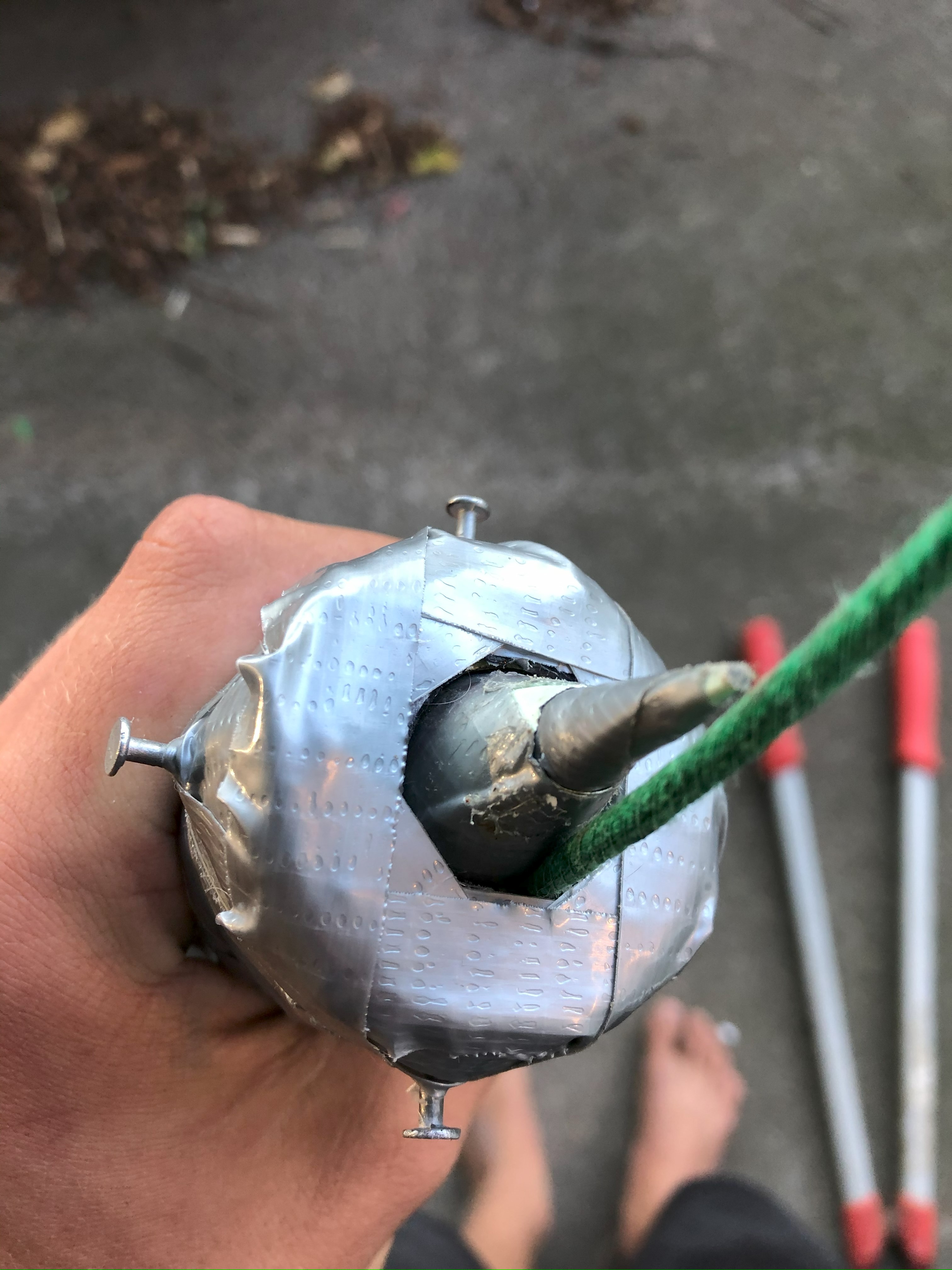Aerospike Model Rocket Nozzle
During high school, I developed my own model rocket engines using a cost-effective method involving PVC pipe, clay, powdered sugar as fuel, and potassium nitrate as oxidizer. Inspired by NASA's Venture Star SSTO and its innovative aerospike engine, I set out to create a model rocket engine using an aerospike nozzle.
Aerospike engines are known for their efficiency across a wide range of ambient pressures, and I was eager to replicate this design. However, I had limited access to materials, working with pop cans, super glue, hot glue, JB Weld, and basic woodworking tools.
First Iteration
My initial design featured a cone-shaped spike made from pop can metal and filled with hot glue to act as a heat sink. It was attached to the engine with thin metal struts and featured a makeshift nozzle constriction. However, this version failed due to the struts melting under the high heat of the exhaust and improper constriction of the nozzle, which limited thrust.

|

|
First Iteration Test Fire
Improved Design
After multiple iterations, I developed a more robust design using thicker nails to secure the spike, which prevented melting. I also improved the nozzle's constriction by using a 90-degree angle for the throat, which provided better flow control. Additionally, I redesigned the spike with a staged, dual-cone structure to better approximate the ideal aerospike shape for efficiency.
Intermediary Iteration Test Fire
Final Results
The final design performed significantly better, with the spike remaining intact and the nozzle functioning more effectively. However, high pressure caused some exhaust leakage around the spike attachment points, and an unexpected side effect was the inflation of duct tape around the spike, which temporarily sealed the nozzle before being blown off. Despite this, the engine continued to fire normally.
This project allowed me to explore the challenges of creating an aerospike nozzle with limited materials and highlighted the complexities of managing temperature and pressure in rocket design.

|

|

|

|